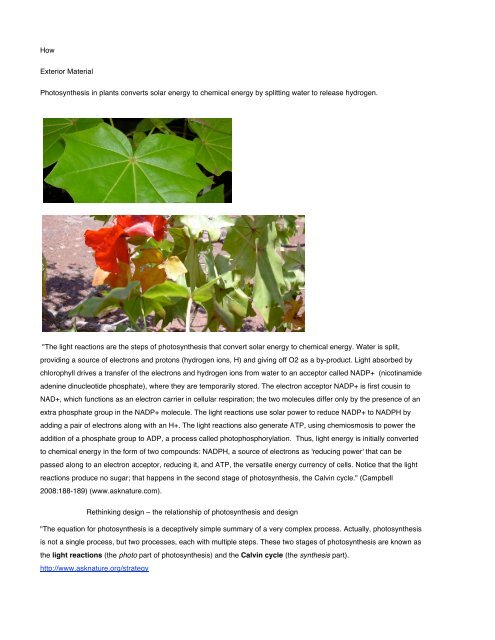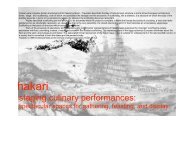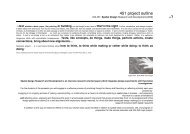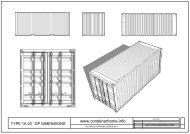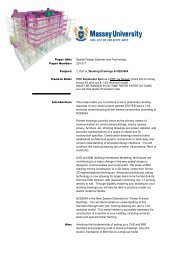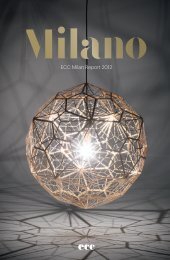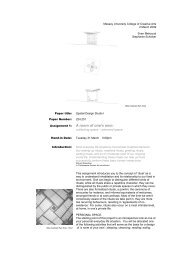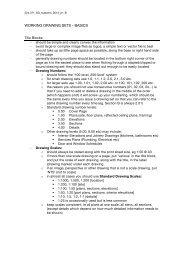rethinking design - Spatial Design@Massey
rethinking design - Spatial Design@Massey
rethinking design - Spatial Design@Massey
Create successful ePaper yourself
Turn your PDF publications into a flip-book with our unique Google optimized e-Paper software.
HowExterior MaterialPhotosynthesis in plants converts solar energy to chemical energy by splitting water to release hydrogen."The light reactions are the steps of photosynthesis that convert solar energy to chemical energy. Water is split,providing a source of electrons and protons (hydrogen ions, H) and giving off O2 as a by-product. Light absorbed bychlorophyll drives a transfer of the electrons and hydrogen ions from water to an acceptor called NADP+ (nicotinamideadenine dinucleotide phosphate), where they are temporarily stored. The electron acceptor NADP+ is first cousin toNAD+, which functions as an electron carrier in cellular respiration; the two molecules differ only by the presence of anextra phosphate group in the NADP+ molecule. The light reactions use solar power to reduce NADP+ to NADPH byadding a pair of electrons along with an H+. The light reactions also generate ATP, using chemiosmosis to power theaddition of a phosphate group to ADP, a process called photophosphorylation. Thus, light energy is initially convertedto chemical energy in the form of two compounds: NADPH, a source of electrons as 'reducing power' that can bepassed along to an electron acceptor, reducing it, and ATP, the versatile energy currency of cells. Notice that the lightreactions produce no sugar; that happens in the second stage of photosynthesis, the Calvin cycle." (Campbell2008:188-189) (www.asknature.com).Rethinking <strong>design</strong> – the relationship of photosynthesis and <strong>design</strong>"The equation for photosynthesis is a deceptively simple summary of a very complex process. Actually, photosynthesisis not a single process, but two processes, each with multiple steps. These two stages of photosynthesis are known asthe light reactions (the photo part of photosynthesis) and the Calvin cycle (the synthesis part).http://www.asknature.org/strategy


